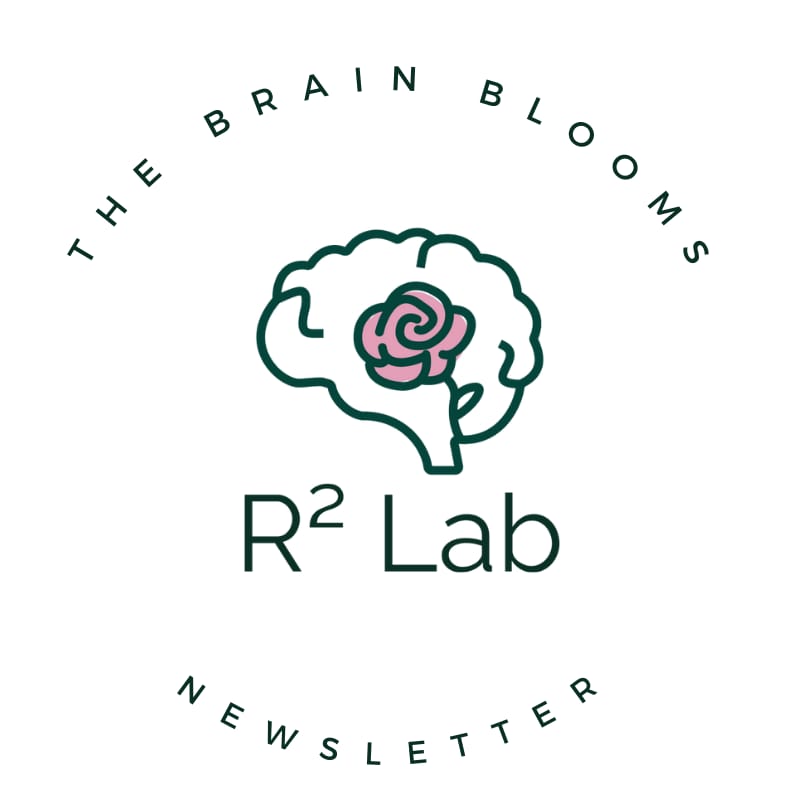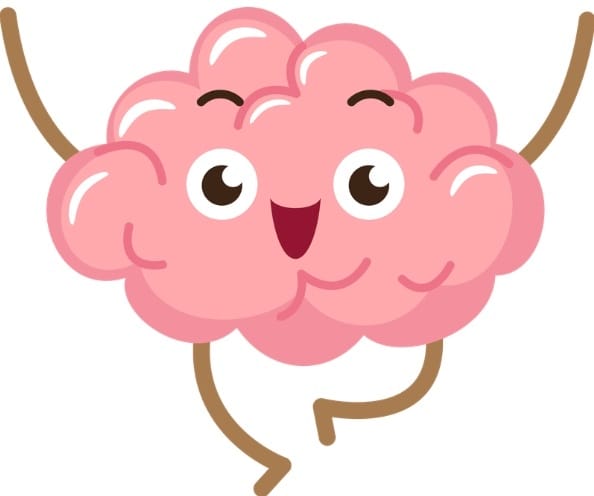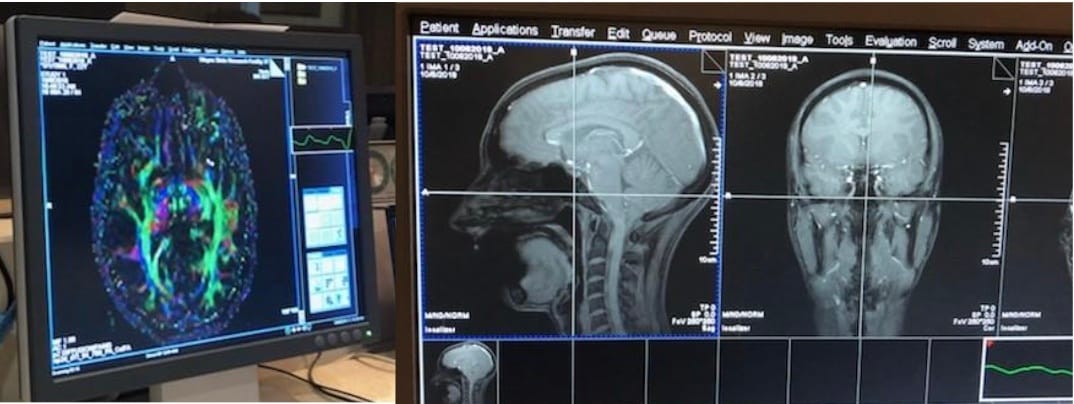- The Brain Blooms Newsletter
- Posts
- Seeing into the Brain
Seeing into the Brain
How we use MRI to understand the brain's structure and function

Have you heard? The Ruvvy Resilience Lab’s first brain imaging is launching! 🎉 To celebrate, we want to tell you more about the technology we are using to better understand the developing brain.
What is ‘Magnetic Resonance Imaging’, or ‘MRI’? 🧲
Magnetic resonance imaging is a tool that both researchers and medical professionals use to better understand the structure and function of the human body.
We at the Ruvvy Resilience Lab are interested in the brain, so we use MRI specifically to understand the structure and function of the brain! 🧠
Have you ever played with magnets or used a compass? Magnetism is a fundamental property of nature. We can use electrical currents to manipulate magnetic fields created by extra large magnets. When we do so, we create changes in electrical currents and magnetic fields that can be measured and translated into an image. In our case, it is an image of your brain.

Like we said, MRI uses natural properties of magnetism to create an image. MRI does not use radiation. Unlike PET, X-Rays, and CT scans, MRI is entirely radiation-free. While some types of MRI scans require a contrast agent (a substance that is consumed into the body to help scientists or physicians better see how the body is built or working), our studies do not require a contrast agent.
MRI is considered very safe. While the magnets can make some loud noises, we can always give people headphones to help dampen the sound. My dad loves getting an MRI and taking a nap while he is laying distraction-free inside the magnet!
To learn more about MRI, check out this FREE website! It includes tons of information about what MRI is, the safety of MRI, and how we scientists create that cool picture of your brain. There are also quizzes to test your knowledge or use in a classroom.
We at the Ruvvy Resilience Lab are excited to welcome youth and their families to our facilities at Wayne State University to help us learn more about our brains and our big emotions as part of the Brains, Experiences, and Mental Health (BEAM) study! This study includes two MRI scans one month apart for youth ages 7-17.
What is the BEAM study about? 💡
This study aims to understand how positive and negative experiences influence brain function and emotions, like fear and anxiety, in youth.
This research could help improve the prediction, detection, and treatment of mental health issues in the future. Participation is entirely voluntary.

Here are some pictures of Dr. Ruvvy’s brain from when she participated in a brain imaging study at Wayne State!
Are you interested in participating in our research?
The Ruvvy Resilience Lab at Wayne State University invites you to help shape the science of resilience by joining the Brains, Emotions, and Mental Health (BEAM) Study. Kids and teens between the ages of 7-17 are eligible to participate with caregiver permission.
If you/your child are eligible, you and your child will be invited to complete two in-person visits at Wayne State University for interviews and brain scans. Each visit will take approximately 2-3 hours. You and your child could earn up to $100 for your participation. Your child will also receive a 3D print of their brain!
If you are interested in participating, please contact the study team at [email protected] or call/text 313-380-1777.
The Greenhouse of the Mind:
Resources to Help You Bloom

Kick off the school year strong and healthy!
The ACCESS Medical Center in Dearborn, MI is offering walk-in physicals now through August 28th. Times available in mornings or afternoons. If you do not have insurance, ACCESS can help!
Looking for another option? Henry Ford Health is offering $30 sports physicals for students of all ages from any school district. The last date available is Tuesday, August 26th in Plymouth, MI. Click here for more information.
Help Support Science Content & Communication
Our team is so excited to get the word out to the people we serve and inform for FREE … and your support will allow us to put more resources and energy into doing precisely that.
Your donations help fund the creation of content that translates our research into practice.
Consider supporting our outreach efforts:
